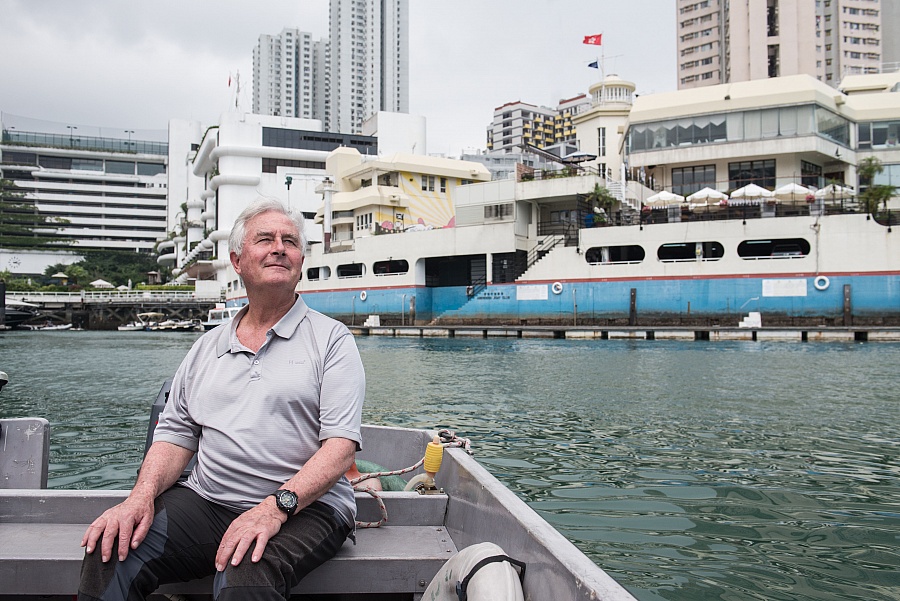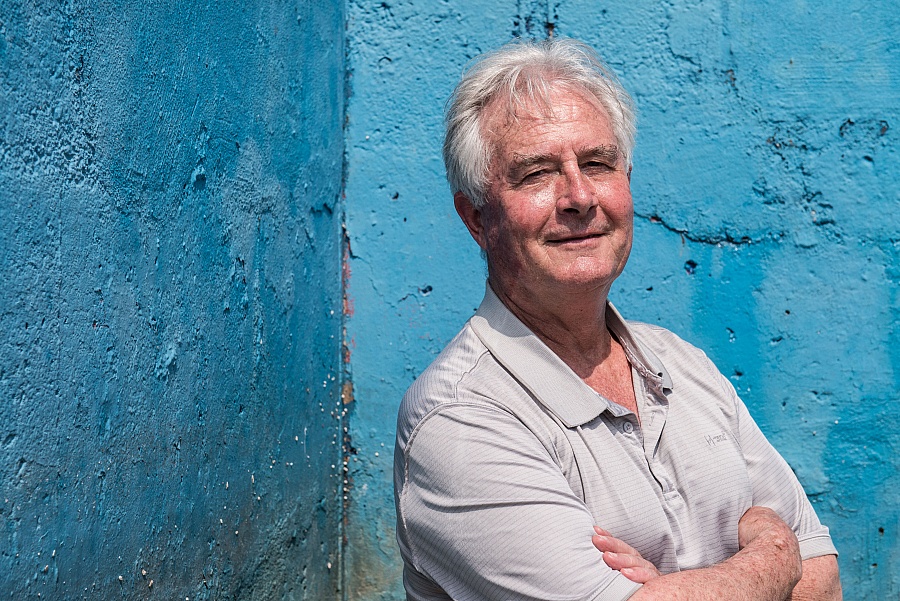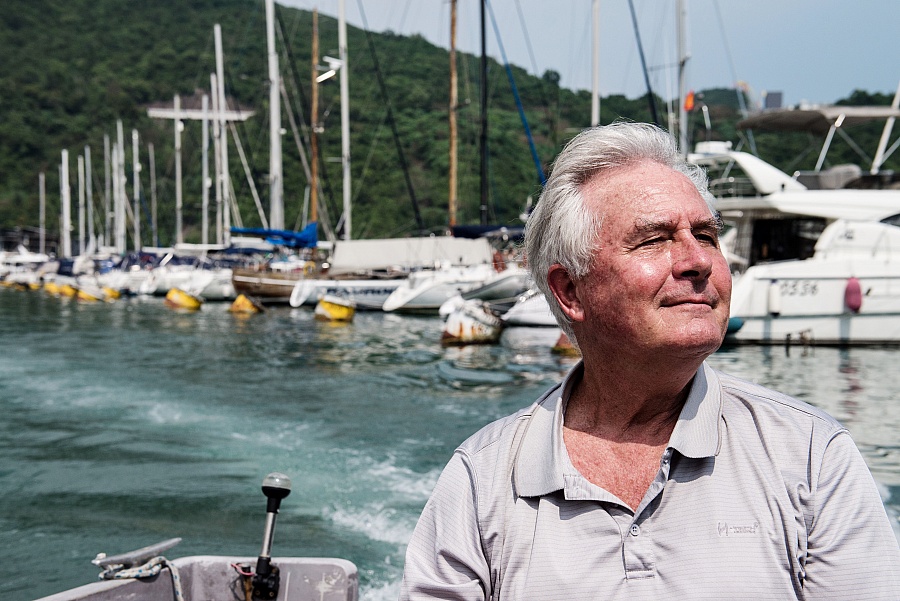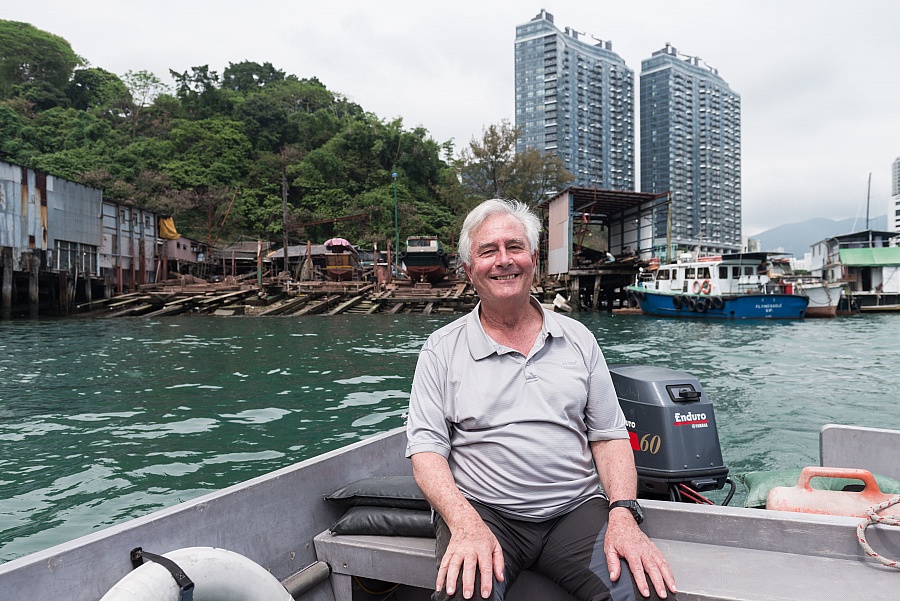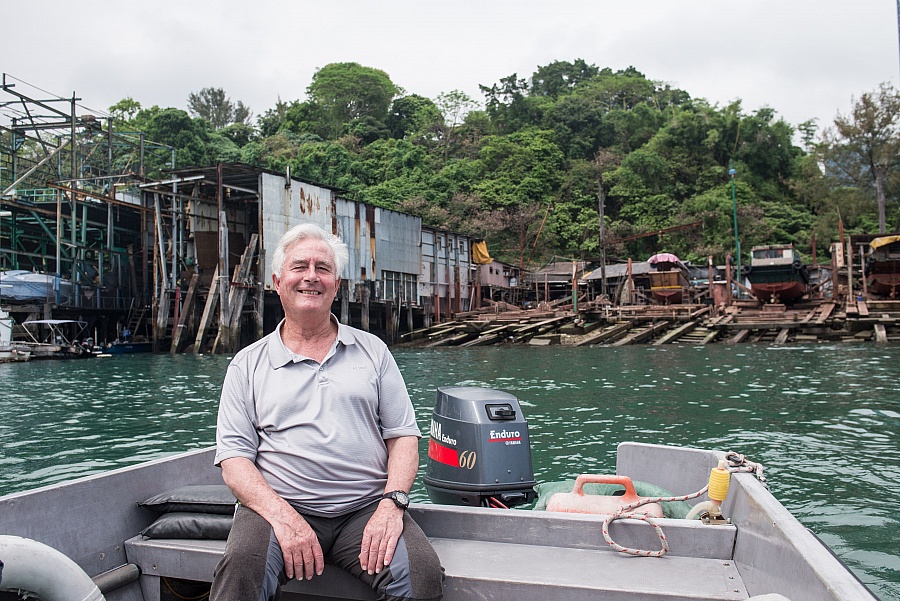Stephen DAVIES
70 years-old
Retiree, consultant in maritime history, teacher
“My relationship with Ap Lei Chau traces back to Uncle George’s time as a member of the Hong Kong Volunteer. Uncle George was with the Education Department in 1941, working as an inspector of schools. He was also with the Hong Kong Volunteer Defence Corps. When the surrender to the Japanese came, George was on Ap Lei Chau, manning No. 4 Battery of the Hong Kong Volunteers. They were out on the western side of Ap Lei Chau, looking out of the Lamma Channel.
My own time at Aberdeen goes back to the very second month that I was back in Hong Kong as a teacher. I came back from Britain in 1974 after receiving my education. My colleague at the University of Hong Kong, Douglas Payne, was a founding member of the Aberdeen Boat Club. Douglas had a boat. He knew I was a sailor and saw a willing victim who would do all the work. So he asked if I wanted to sail on his boat, and we started sailing out of Aberdeen. I soon joined the Aberdeen Boat Club, started sailing with others in that little boat, which I ended up maintaining as well.
At one stage, we were worried about losing these places to paint boats. So Douglas said, we could put a drying platform down, and put in a couple of posts and dry out at low tide, paint the boat, wait for the tide to come up, turn the boat round, wait for the tide to go down, and paint the other side. That way we can do it cheap and do it on our own. I think we could do that on Tombolo, the little sandy beach that links Ap Lei Chau and Ap Lei Pai. But we didn’t know what the bottom was like. So I surveyed it. This is my happiest memory. This is my very first Aberdeen.
I had a pair of oar which I bought from a guy who used to make oars on the Praya Road. One Saturday, I put the oar over my shoulders and started to walk. I walked along Victoria Road, which in those days only had two lanes and no traffic. I came out by Wah Fu, opened about two years previously, and walked down Pok Fu Lam Road. I passed Hing Wai, which was all working ice-factories with ships loaded with trawls of ice, walked on down through Aberdeen Praya Road. I passed through the Wong Chuk Hang factories up on to the hill, and went down Shum Wan Road, where the open bay and Aberdeen Boat Club was. I got the oar down the water, and rowed out of the typhoon shelter. I rowed in and out around the beach, doing a complete survey of the beach to find out whether it was shallow and gradual enough for a dry platform. It was my happiest morning. I was in love with Aberdeen."
**Note: George Stainburn Wilby was a lieutenant in No. 4 Battery of the Hong Kong Volunteer Defence Corps in December 1941. After Hong Kong’s surrender to the Japanese, he was sent to the Sham Shui Po camp. He returned to the civil service and continued working at the Education Department until retirement in the mid-1950s. He died at the age of 62.
